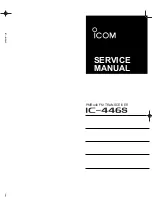
6 • 65-2462RK Hydrogen Transmitter
Description
This section describes the components of the hydrogen transmitter. The transmitter is a 4 - 20 mA type
detector head. It consists of the hydrogen detector, amplifier, and junction box.
Figure 1: Hydrogen Transmitter Component Location
Hydrogen Detector
The H
2
sensor detects hydrogen in the %volume range. Two sensing elements are protected within the
detector. Through a series of thermal and electronic reactions, these elements produce an electrical
output that is proportional to the detection range. It is packaged in a 1/2 inch NPT nipple with a
sintered metal flame arrestor on one end allowing ambient air to diffuse into the detector. The flame
arrestor also contains any sparks which may occur within the detector. The 1/2 inch NPT mounting
threads at the top of the detector allow you to mount it into the bottom conduit hub of the junction box.
A rainshield screws onto the bottom of the detector (flame arrestor end). The rainshield helps protect
the detector from rain and debris in the monitoring environment. Four color-coded leads extend from
the top of the detector. The leads allow you to connect the detector to the amplifier.
RW
G
S
B
P
W
R
/
S
IG
H2 Detector
Amplifier
LE
L
ZE
R
O
SPA
N
J-Box
Reducing Bushing,
3/4 NPT to 1/2 NPT





































